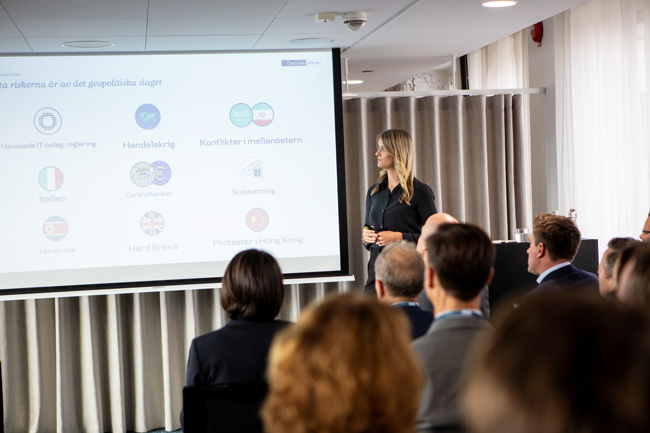Political risks are more present than ever. Trade war, Brexit, the protests in Hong Kong, political turmoil in Italy and the ongoing conflicts in the Middle East are just some of the risks an investor need to adapt to. The fact that we currently have the longest global business cycle in history, combined with a record long bull market, does not help to ease worries. How long can this continue?
The bad news is that we probably will have to live with the elevated political uncertainty. The biggest headwind to growth is the trade war, which has caused the global economy to weaken significantly from where it was 1-2 years ago. We currently do not believe the US and China will reach a deal before the American presidential election is over in November next year. Our base case is that it will linger on, but not escalate much further from the current level.
The good news is that the service sector is holding up well, and more stimulus is coming. But how much can monetary policy do, when interest rates are already negative? In the US, there is room for rate cuts and we believe the Fed will cut five more times over the next twelve months. That will be positive for growth and ease financing conditions. In Europe, it is a different story. The ECB already has a negative deposit rate and QE was terminated only eight months ago. We believe the ECB will cut the deposit rate to -0,6%, and restart QE in September. Monetary policy alone may not be enough, but help will also come from fiscal stimulus.
Fiscal policy is already expansionary in the US, and China is continuously taking new measures to stimulate the economy to avoid a hard landing. Chinese stimulus is positive for Europe too. In Europe, there is a possibility that Germany will start to use fiscal policy to avoid a recession and help the economy recover some ground. We believe new monetary and fiscal stimulus will be enough to support the European economy and keep the business cycle going, but growth will be lower than before this mid cycle correction.
In the light of lower interest rates and new stimulus, we see a higher potential in equities than in fixed income over the next 12 months. We believe the business cycle will continue, but at a slower pace. We therefore recommend a small overweight in equities in our strategies, with focus on quality and dividends. When the trade conflict has escalated, US equities have proved to be most resilient to the turbulence. As we believe the trade war will drag on, we see the highest potential in US equities. We are neutral to Europe and emerging markets.
We also seek safety in bond markets. Despite low and negative interest rates, bonds are a compelling necessity to achieve diversification in a portfolio and some degree of certainty in these uncertain times. We prefer bonds of higher quality – such as government bonds and investment grade bonds. To achieve a slightly higher return potential we have to take on a little more risk. Therefore, we also recommend a slight overweight in emerging market bonds, at the cost of an underweight in high yield corporate bonds.

Maria Landeborn presenting at Danske Bank Asset Management’s Placeringsevent 2019.

The event takes place at the top floor venue of our Norrmalmstorg offices in Stockholm, and includes opportunities to network with the speakers and participants.


